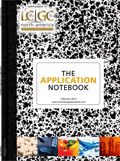Extracting Semi-Volatile Organics from Drinking Water by EPA Method 525.3 Using the SmartPrep Cartridge Extractor
Method 525.3 is similar in many ways to its predecessor, method 525.2 (Rev 2.0 – 1995), however there are significant changes which make the newer 525.3 a vastly improved method during sample collection, extraction, and analyzing.
Method 525.3 is similar in many ways to its predecessor, method 525.2 (Rev 2.0 – 1995), however there are significant changes which make the newer 525.3 a vastly improved method during sample collection, extraction, and analyzing.
Horizon Technology evaluated 137 compounds in a 1 L sample with the SmartPrep Automated Cartridge Extractor. Within that list are newly introduced semivolatiles to this revision. These newly introduced compounds are in Table I and have been evaluated with a 10 mL/min and 30 mL/min sample processing time.
Instrumentation
• Horizon Technology
- SmartPrep® Automated Cartridge Extractor
- 6 mL Cartridge Configuration
- 20 mL Tray
- DryVap® Concentration System
- DryDisk® Separation Membrane
• J.T.Baker
- 6 mL H20-Phobic DVB Speedisk® Column
• Phenomenex
- Zebron™ ZB-SemiVolatiles
• Agilent
- 6890 Gas Chromatograph
- 5975C Inert MSD
- 7683B Autosampler
Method Summary
1. Sample bottles are prepared using 0.10 g/L L-ascorbic acid, 0.35 g/L trisodium EDTA, and 9.4 g/L potassium dihydrogen citrate.
2. A 1 L sample should be collected in this bottle and its pH should be less than or equal to 4.
3. Verify that the sample pH is less than or equal to 4.
4. Add surrogate and spike to each 1 L sample
5. Insert Sip Tubes and attach Bottle Rinse Kits to each sample bottle.
6. Place a 20 mL VOA vial in positions into position of the collection tray relating to the samples loaded.
7. Place cartridges into the corresponding positions on the carousel.
8. Start the extraction process using the 525.3 method.
9. When complete, remove the collected extract.
10. Place six 200 mL concentrator tubes with a 1 mL endpoint on the DryVap.
11. Place a DryDisk membrane in each DryDisk reservoir and place on the DryVap.
12. Pour each extract into a DryDisk reservoir and start the DryVap.
13. Rinse each VOA vial with ethyl acetate and pour the rinsate into the reservoir, repeat two times.
14. Rinse down the sides of the reservoir with ethyl acetate, repeat two times.
15. Upon completion, bring the final volume up to 1 mL using ethyl acetate.
16. Transfer the extract to an autosampler vial, add IS, and analyze by GC–MS.
Results
Table I illustrates the results of six samples (per flow rate) that were used to produce a valid Initial Demonstration of Precision (IDP) and Initial Demonstration of Accuracy (IDA) Study. Both IDA/IDC studies were configured with its optional Bottle Rinse Kit.

Table I: 525.3 IDA/IDC Results (5 µg/L)
The recoveries and deviations for each set of data were excellent despite the loading capacity of 137 compounds per 1 L and varying sample flow rates.
Horizon Technology, Inc.
45 Northwestern Dr., Salem, NH 03079
tel: (603) 893-3663, fax: (603) 893-4994
Website: www.horizontechinc.com

Separation of Ultra-Short and Long Chain PFAS Compounds Using a Positive Charge Surface Column
December 11th 2024A separation of ultra-short and long chain PFAS (C1-C18) is performed on a HALO®PCS Phenyl-Hexyl column along with a HALO®PFAS Delay column which demonstrates excellent retention for both hydrophilic and hydrophobic analytes.














